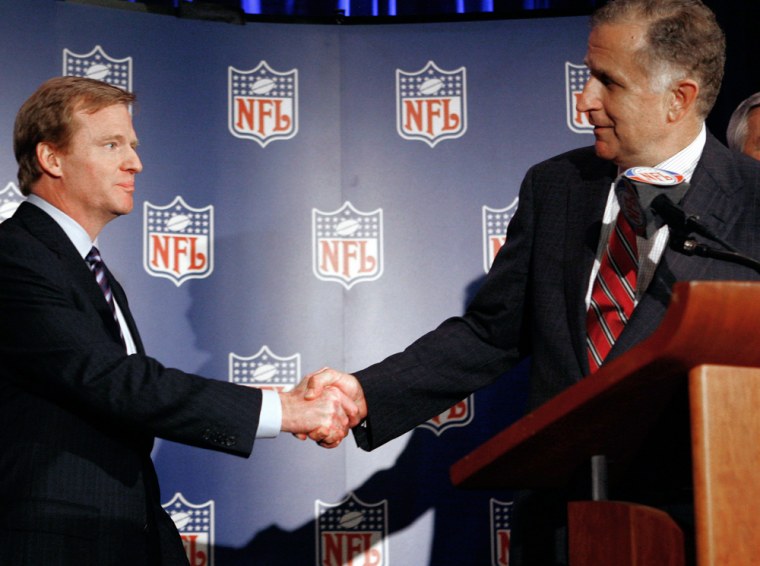Paul Tagliabue has received much deserved praise for his accomplishments after announcing in March that he would step down after more than 16 years as commissioner of the National Football League.
Tagliabue, 65, brought labor peace to the league in 1992 when he and union leader Gene Upshaw negotiated what was then thought to be a highly controversial labor agreement that brought free agency and the salary cap to football. But the agreement worked marvelously because it prevented a strike, showed the players that the owners valued them as partners and left enough incentives on the table for new owners to behave like entrepreneurs — witness the huge success of Daniel Snyder of the Washington Redskins and Robert Kraft of the New England Patriots.
In a new collective bargaining agreement signed this March, Tagliabue convinced the owners to increase the amount of money they are going to share with the players and got the league's richer teams to agree to fork over close to $1 billion to their low-revenue rivals over the next six seasons.
Tagliabue also oversaw a successful league expansion (Carolina Panthers, Jacksonville Jaguars, Cleveland Browns and Houston Texans) and handled the extremely sensitive issue of relocating teams (Cleveland to Baltimore, Los Angeles to St. Louis) with a brutal combination of diplomacy and capitalistic penance (excluding the move of the Raiders from Los Angeles to Oakland in 1995) that both satisfied football fans and gave team owners much better stadium deals.
But Tagliabue's greatest achievement has been the creation of a tremendous amount of wealth for his bosses. During Tagliabue's tenure, annual national broadcasting fees climbed to $87.5 million from $17 million per team. The current broadcasting deals with General Electric, News Corp., the Walt Disney Co. and Viacom will pay the league an average of more than $3 billion annually over the next six years — more than Major League Baseball and the National Basketball Association will earn combined. Tagliabue even started the NFL Network — the first cable and satellite network fully dedicated to the NFL and the sport of football 24 hours a day, seven days a week — two years ago. It doesn't make a lot of money for the owners yet, but you can bet it will keep the major networks upping the ante for broadcasting rights.
Besides being the main source of cash for paying players, the league's broadcasting deals also helped secure a billion-dollar credit line that the owners can borrow from at a dirt-cheap interest rate.
The gravy has come from the 17 new stadiums that were built during Tagliabue's tenure. Add to that the new stadium the Arizona Cardinals moved into this season, the stadium the Indianapolis Colts will have for the 2008 season and the stadium the New York's Giants and Jets are expected to share by 2010 and more than two-thirds of the NFL will have gotten new digs — along with all the extra cash they bring in from corporate sponsors and premium seating — during the Tagliabue era.
The upshot: soaring franchise values. For example, the price paid for expansion teams rose from $206 million in 1993 to $700 million in 1999 — an annualized increase of 22.6 percent. This year the average NFL team is worth $898 million, 212 percent more than when Forbes began calculating team values eight years ago. Look at it this way: Football team values have increased 11 times more than the S&P 500 since 1998. Profitability? In 2005, the average NFL team posted $30.8 million in operating income (earnings before interest, taxes, depreciation and amortization), versus $5.3 million in 1997.
Incredibly, Tagliabue ushered in this era of growth while reducing the disparity in team wealth. He has accomplished this by cleverly leaving the Los Angeles market devoid of a franchise since 1995, which has given small and mid-market teams with shoddy ownership, such as the Cincinnati Bengals and Arizona Cardinals, the leverage they needed to coax taxpayers into building them new stadiums. Nine years ago, the difference in value between the richest half of the league and the bottom half was 37 percent. This year the gap in value is just 27 percent.
The increase in football team values under Tagliabue is a benchmark his successor, Roger Goodell, will find extremely difficult to match.
